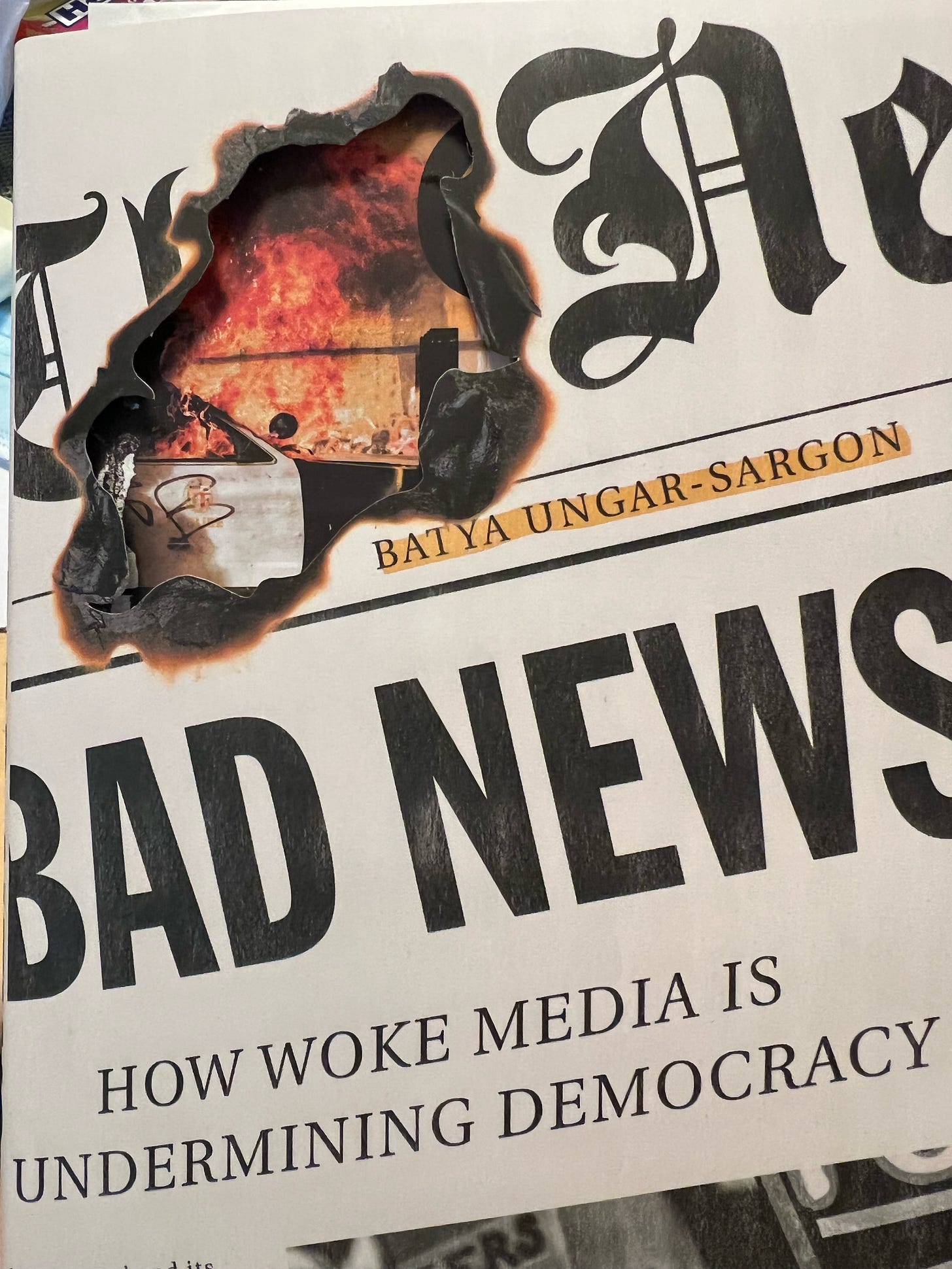New book on "Woke Media" examines class divisions among journalists
Author Batya Ungar-Sargon's work a timely look at issues plaguing media
I’ve been a newspaper reporter and journalist for close to 10 years now, and so I read Batya Ungar-Sargon’s book, Bad News: How Woke Media is Undermining Democracy, with a great deal of interest.
The premise of the book is that America’s chief division is along economic and class lines. The media in recent years has focused instead on race as its chief framework from which to analyze the problems and issues that arise in society. The book traces the history of journalism, from being a working-class profession to one that is predominantly dominated by people who have money to spare and thus the freedom to publish in America’s newspapers and magazines.
Also of interest was the book’s look at how certain viewpoints can lead journalists to being ostracized by editors, fellow reporters, columnists and people who hold the key to the gated world of media. What’s interesting about these common situations is that the reporters are frequently cast out because they expressed the view of the majority of Americans. The reasoning behind the “canceling” of those writers is that their views–though the prevailing one–are harmful to the social engineering journalism is tasked with doing.
An example of this is covering alleged incidents of police wrongdoing. The Investigative Reporters & Editors Handbook advises journalists that two types of situations can occur in those circumstances. First, the police violated protocol and abused their positions of authority. The second is that the criminal suspect is attempting to deflect from their crimes by focusing instead on the behavior of the cop. The IRE suggests writing those stories with a level of skepticism for both the suspect and law enforcement.
In reality, many journalists blame the cop as soon as wrongdoing is alleged by a person who has been arrested. Furthermore, delineating the view that the officer was one person in a department of otherwise principled public servants can be portrayed as perpetuating white supremacy within inherently flawed law enforcement institutions. The only acceptable view among some people on the left is that you have to abolish police departments. In my experience of speaking to Black people–which I do every day–that is not what the vast majority of them desire. Additionally, the specific criminal justice reforms that could happen seldom are explored or explained by many who cover these stories.
A few things I would criticize is that the etymology of “woke” could have been explored further and then treated with balance. It began as a term of affection from Black people toward those who had made an effort to learn about and acknowledge challenges that were unique to the African-American community. Unfortunately, white people on social media who had never done the work to learn most of those things wielded whatever knowledge they had to elevate themselves to a higher status morally and socially to whomever they interacted with on Facebook or Twitter. Most people who’ve read hundreds of books on a topic and are legitimate experts realize that they have to be patient with those who haven’t, and they listen to their concerns while speaking to them in an egalitarian way. The lack of those social graces among “woke” people are what turned the term into a pejorative.
Additionally, certain issues like poverty and food insecurity disproportionately affect communities of color. Here in Allegheny County, half of the Black population is on food stamps. They also face over-incarceration and transportation barriers to a far greater degree. Examining the reasons for that is fair subject matter for columnists, reporters and editors.
Much of what ails media today is that most of the content in leading newspapers and magazines is written from an essay-driven approach that can be done from a desk instead of out in the field. Major newspaper companies have instructed reporters to not cover school board or city council meetings because they don’t get enough web traffic. Instead, they’re supposed to cover the public officials and ask what news may happen. What does get the most engagement are polarizing articles that beget enormous plaudits or condemnations because of how divisive it is. That’s also what’s driven higher on social media.
Jimmy Breslin–a working-class reporter if there ever was one–despised desk-bound journalists. It would be interesting to see how he felt about those who think their chief task is to get as much social media engagement and public approval as they can. Ungar-Sargon’s work likely approximates what most of those types of ink-stained wretches would feel.

